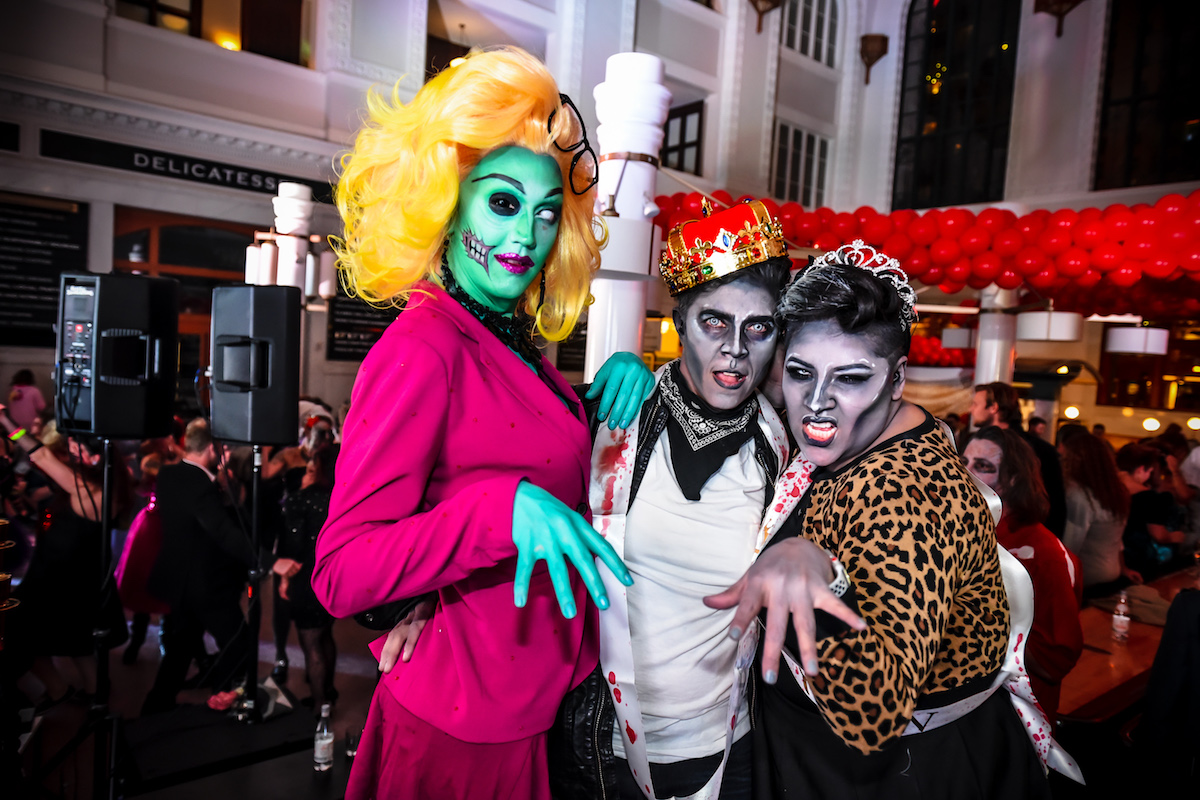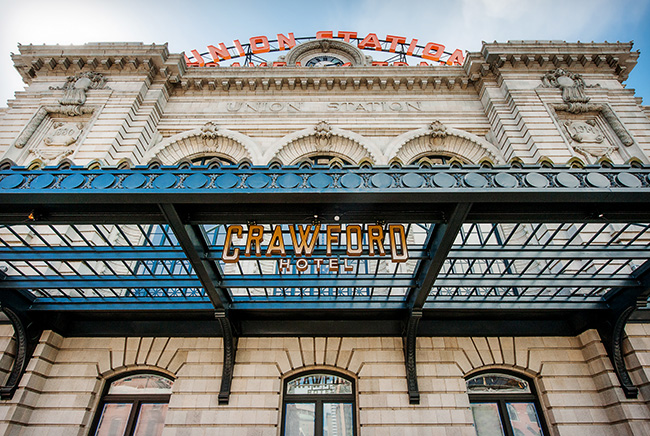A More Perfect Union Station
By Michael Frazier
The recently revamped Union Station at 17th and Wynkoop isn’t a neighborhood so much as a Denver Landmark and lifestyle highlight. The Beaux-Arts building, originally erected in 1881, was initially conceived to consolidate the four disparate and haphazardly built railroad stations that criss-crossed the 19th-century city making patron connections and freight distribution frighteningly slow, inconvenient, and relatively difficult for the young downtown infrastructure. Union Station became the hotspot and subsequent anchor for the new city and was, at the time, the largest and tallest building west of the Mississippi complete with a clock tower visible from 12 miles away. A freak fire in the women’s bathroom became a springboard for the station’s remodel in 1914 when the Grand Hall was retooled a guest waiting area that opened onto 17th street, Denver’s then commercial strip. When rail travel began its slow decline in the late 20s, the station too slipped trippingly into disuse and inevitable disrepair even with the now-famous Travel By Rail neon sign added in the early 40s to bolster business. In the following decades, multiple proposals were put forth to demolish the structure and sell off the land for private use, government offices, and warehouse space. Happily for current Denverites, someone always had the foresight to oppose these persistent measures.
On March 18th of this year, Jeff Hermanson was officially inducted into the prestigious Colorado Tourism Hall of Fame for his visionary work on Larimer Square and nearby Union Station. The two properties became a 30-year slog for Hermanson to reconceptualize public-private enterprise, reframe city history and functionality, and re-format the way both citizens and visitors view their downtown culture. Much like Hermanson had hand-selected the businesses and business owners of Larimer Street, he and his group made a special effort to carefully curate the tenants of Denver Union Station. The goal was to craft a transportation hub that foremostly represented Denver as a whole and breathed life back into the structure’s initial function: to be the premiere transport hub in and out of the city.
The partnership between RTD, Amtrak, Crawford Hotel, Snooze, Tattered Cover, Bloom, and other longstanding iconic companies now thrive harmoniously within the building and its western bloc expansion. The underground bus station houses a 22- gate bus terminal while overhead, the six-track light- rail station will eventually be home to the FasTrax Boulder, Airport, and West Corridor lines directly connected to the 16th Street free mall ride at the west end of the development. Amtrak has a placement priority and offices that have never left, but now feel like an honored guests in a time-tested piece of the city’s heritage.
However, the best update is that even if you aren’t traveling anywhere, the Grand Hall is a welcoming forum of recreational public space decorated with vintage furniture for lounging, desks for work-style meetings, outlets for laptop and phone charging, an intimate setting for more private conversations, and large, velvet sectionals for group hangouts — all surrounding two vintage and fully-functional shuffleboard tables available free of charge. The adjacent Terminal Bar serves food and drinks consumable in their leather-clad bar.
Union Station may not be the tallest, grandest building west of the Mississippi anymore, but it’s perhaps the most glamorous “living room in a city” that the Queen City of the Plains could ask for.
What's Your Reaction?
Founded in 1976, Out Front is the largest LGBTQ news organization in the Rocky Mountains. "Like" Out Front on Facebook: facebook.com/outfrontcolorado, and follow us on Twitter: @outfrontco.








